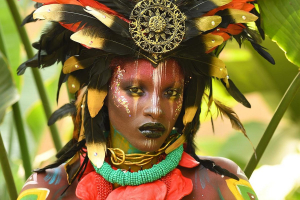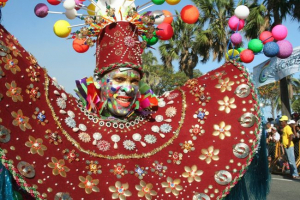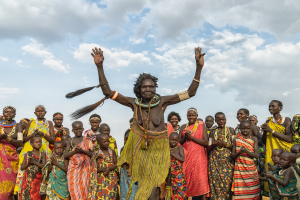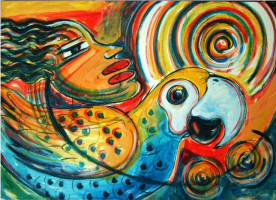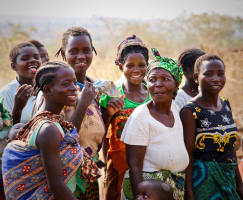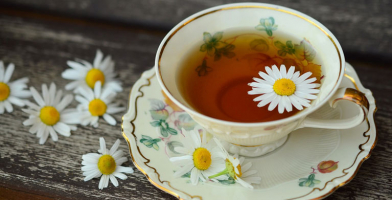Top 10 Laos Culture, Customs and Etiquette
Laos captivates travelers with its natural beauty and distinctive culture and customs. You'll have the chance to interact with incredibly pleasant folks and ... read more...see how leisurely their lives are when you travel to Laos. Tourists are impressed by Laotians' warmth and their distinctive "nop" greeting, which they use to greet each other. Boualaphan Phonesavanh, often known as Phan, discusses proper greetings and behavior in Lao. Here are some things to know about the Laos Culture, Customs and Etiquette.
-
The bottom of the feet is the least frightened, as is the case in many Asian cultures, while the head is regarded as the most sacrosanct part of the body. One should not put their feet on chairs or tables, contact somebody with their feet, or aim them in the direction of a person or a terrifying object. If you accidentally touch someone's head or foot, please sincerely apologize. Use two hands or your right hand to pass something to someone. Avoid using your left hand (associated with toilet duties). This is particularly true when a younger person gives something to an older person. Books should never be set on the ground or moved over a table and should always be treated with the utmost respect. That is one of the lists of Laos culture, customs, and etiquette.
In Laos, you have a "high" head and "low" feet. Using your feet for anything other than walking or participating in sports is considered impolite. The lower part of the body is made up of the feet (as spiritually as physically). Never use your foot to indicate or touch another person or thing.- A formal greeting for most Lao people is the “Nop” (joining one’s hands together in a praying gesture at chin level). Handshakes are also commonly used among male friends and foreign visitors.
- The Lao word for “hello” is “Sabai dee”. Say it with a smile and you’ll be well received.
- Feet are low. Placing them on furniture or pointing at things or people with your feet is not acceptable.
- Personal cleanliness is valued highly in Laos. Anyone who has a strong body odor tends to get disgusted looks.
- Before entering a Lao person’s home, take your shoes off and leave them outside the house or on the stairs.
- In Lao homes, if the host (especially an elderly person) sits on the floor, you should sit there as well. Don’t sit anywhere higher if you want to be seen as a respectful person.
- It is polite to gently crouch down when walking past someone who is seated, especially older people.
- Stepping over someone on your path is very impolite. Similarly, stepping over food is disgusting and some Lao won’t eat the food that has been stepped over.
- Lao people usually serve water to guests arriving at their homes, it is polite to accept it even if you don’t want to drink it (you don’t have to drink it).
- In offices, never place your feet on a desk while sitting on a chair. That’s very impolite. Some foreign specialists/advisors have been thrown out for doing this, so be especially careful if you come to work here.
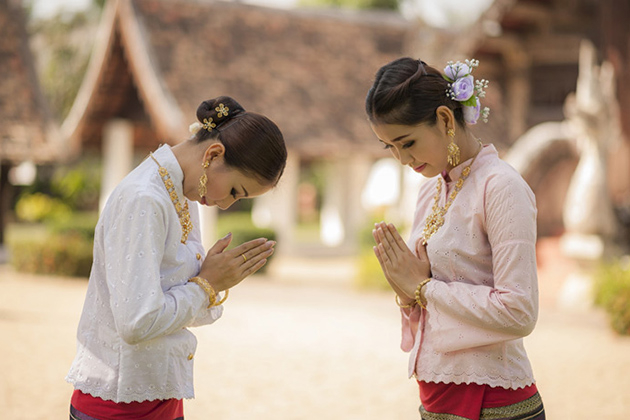
vietvisiontravel.com 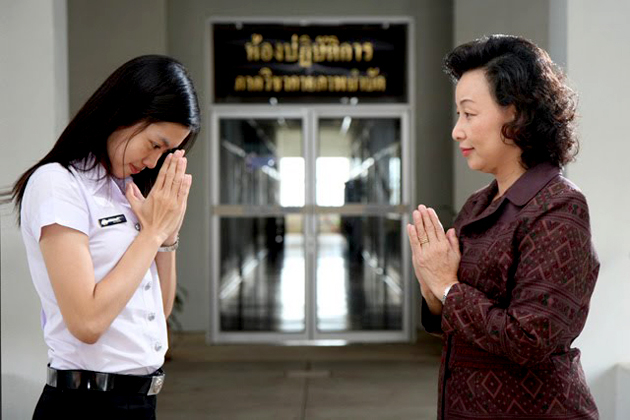
vietvisiontravel.com -
The most typical form of welcome and farewell is a brief bow, called a "nop" in Laos. It entails putting one's hands together in prayer between the level of the chest and the level of the nose, without contacting the body, and bending slightly. The greater the respect shown, the higher the hands are raised. The slight bow is typically accompanied with a grin and a small bending of the knees. Never raise the hands over the level of the nose.
All of Southeast Asia's Buddhist regions employ this type of bow. In addition to being a greeting, it can also be used to show gratitude or respect. The bow is particularly significant when addressing persons of higher position or age to express respect. When two people of different statuses cross paths, the person with the lowest status should start the bow (i.e. the one who is younger, of lower income, of lower position, or a women meeting a man). Bows shouldn't be used around kids. Just say hello to them. Many people from Southeast Asia are at ease shaking hands with people from the West.
The "height rule," according to which persons of low status are supposed to respect those of high status, has been physically shown by the nop. During the nop, the hands are frequently lifted while you bow your head, but there are guidelines for how high they should be raised. The more respect is generally exhibited, the higher the hands are lifted. It's also significant to note that the hands are raised gracefully and fluidly rather than abruptly. Additionally, respect is indicated by lowering the head toward the hand. Hands are held at neck level, but not above the chin, when equals or strangers who are unsure of the status of the individuals they are meeting meet. The head is dropped so the nose is just above the fingertips when an inferior and superior are in contact. The heads of the superior and inferior are either straight or slightly curved.
Nodding is a way to show respect for both people and inanimate objects. This is frequently done when passing a temple or other place of worship. When approaching a statue of the Buddha or a monk, one is expected to bow deeply until their head almost touches the ground. Men are expected to sit on their heels, and ladies should cross their legs to the side. One should straighten their body into a sitting nop position once their head almost hits the floor and place their palms on the ground (right hand first).
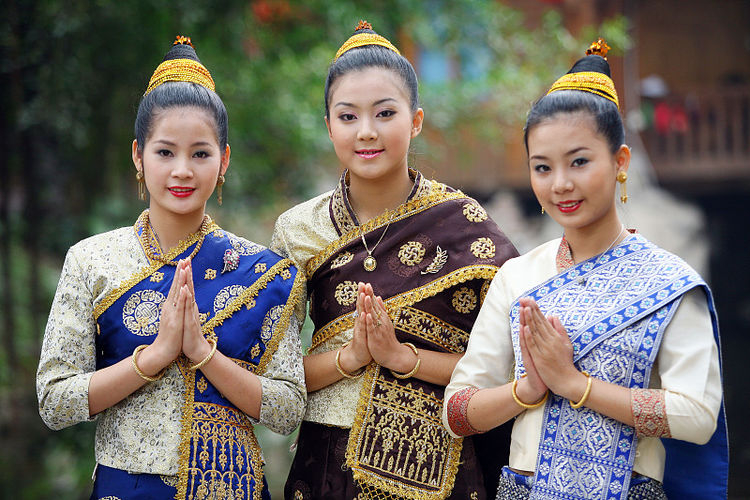
indochinavalue.com 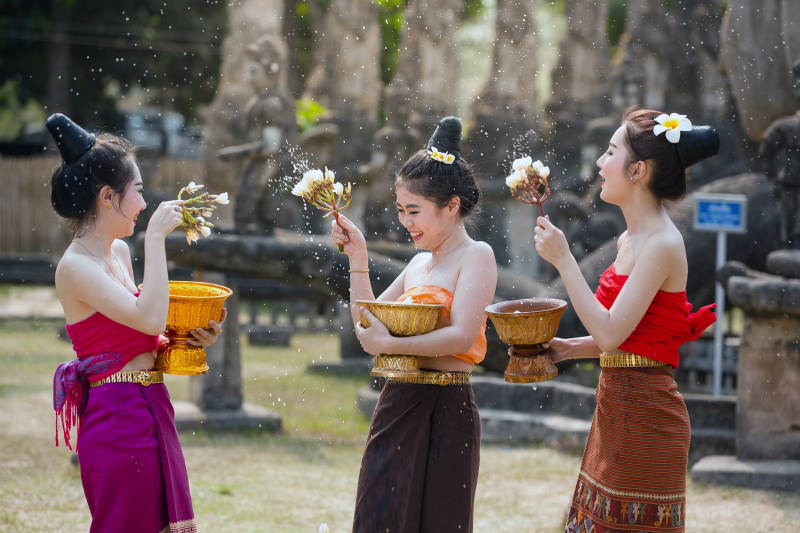
indochinavalue.com -
It is improper to express displeasure or rage in public. Everyone loses face because of it. Publicly criticizing someone is frowned upon since it will make them look terrible in the eyes of the community. To avoid blaming or humiliating any one person, critiques and suggestions should be delivered in the context that they are necessary. Rarely do men and women publicly display their affection. It is impolite to aim directly at someone, touch someone's head or hair (other than a tiny child), point your feet directly at someone (particularly a monk or a statue of the Buddha), hurl things, or act generally aggressively or violently. The majority of Laotians sit such that their feet are hidden from view, since exposing the bottoms of one's bare feet is regarded as impolite.
Men should wear long pants and a shirt when entering a temple. Avoid wearing shirts, miniskirts, halter tops, and strapless tops on women (anything that exposes their shoulders). Lao people value visitors who are well-groomed and presentable. Women should wear modest clothing. Nude bathing or swimming in public is not encouraged. The act of touching someone's head is incredibly rude. It is improper to show affection in public. Rarely do men and women publicly display their affection. Even holding hands is inappropriate. But frequently, men shake hands with other men, and women with other women. This is not a sign of a gay relationship, but rather a strong friendship.Use two hands or your right hand to pass something to someone. Avoid using your left hand (sometimes associated with toilet duties). This is particularly valid when a younger person presents an older person with something. You should use two hands to present a book or paper to someone older than you or in a higher position to show respect. An alternative is to hold it in your right hand while holding your right elbow with your left hand. The offering of an item is often accompanied by a bow. The recipient should take it with their right hand and do it carefully. Books and other written materials should never be moved across a table or placed on the floor, as they should be treated with the utmost respect. Loud talking can occasionally be interpreted as menacing. More people will listen to you if you speak quietly and politely. In the past, a loud voice communicated a strong, erratic force that was capable of destroying whomever it was directed at.
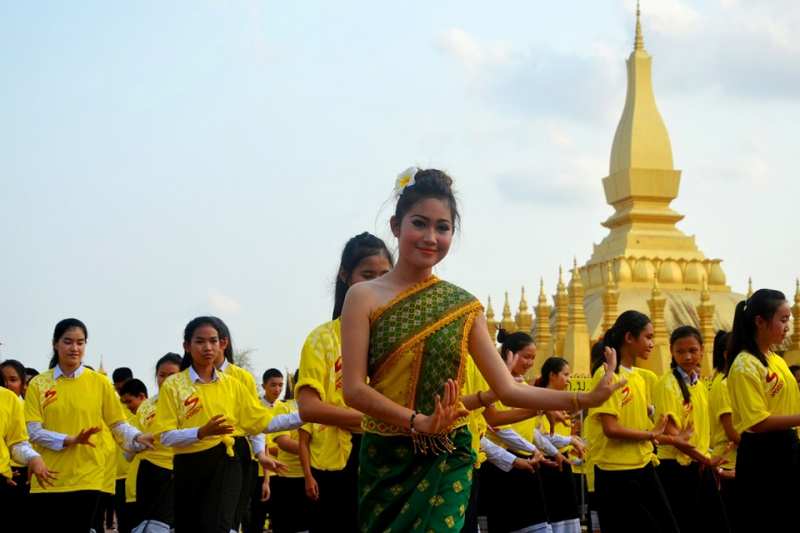
vietvisiontravel.com 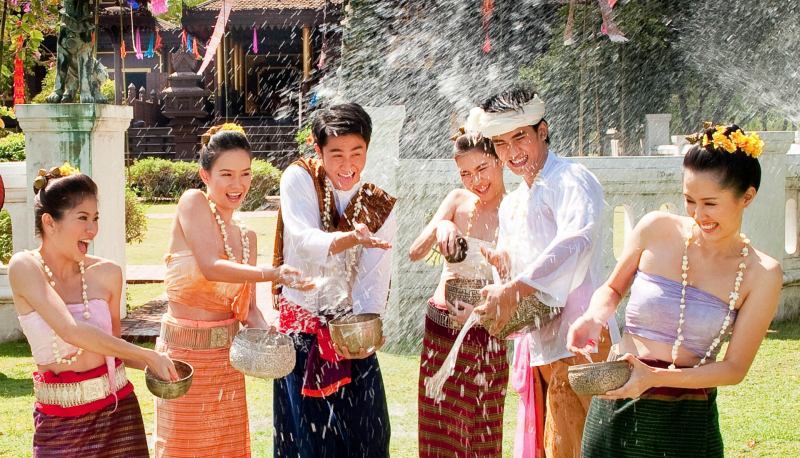
vietvisiontravel.com -
In many Asian cultures, the bottom of the foot is regarded as the least sacred and filthiest part of the body, while the head is seen as the most sacred part of the body. You shouldn't touch anyone's head, point your foot at them or a sacred object, lay your hand on the back of their chair, put your feet on a table or chair, or contact them with your feet. If you accidentally touch someone's head or foot, please sincerely apologize. It is one of the lists of Laos culture, customs, and etiquette. The Thai people have historically displayed their "height" reverence for the monarchy by crawling in front of the king with their heads below the king's feet.
Many people in Southeast Asia hold the view that the kwan, the spiritual energy of life, resides in the head, which is considered to be the holiest portion of the body. Never, not even in the warmest of situations, pat a Thai on the head. Standing over someone who is more mature, wiser, or spiritual than you is also regarded as disrespectful since it conveys a sense of superiority. Lower your head as you pass a gathering of people out of respect. Always keep an eye on the Thais. Hats are treated with respect since they are connected to the head. They are carefully hung, not to be thrown carelessly on a chair or, more specifically, the floor.
Since the feet are the body portion that accumulates the most dirt, tremendous care is taken to keep them off of people, food, utensils, and sacred literature. Asking someone to relocate rather than stepping on them shows considerably more respect. Likewise, avoid touching someone with your feet. If you do, you can reach out and touch their feet or make an apology-insinuating motion. Crossing your legs when seated is also impolite because it increases the likelihood that the bottoms of your feet will be pointed in someone's direction.
To point your foot at someone is the equivalent of calling yourself the dirtiest, lowest creature on Earth. Never give a child a head pat. Patting someone on the head is rude. Because the higher up on the body something is, the more sacred it is, many Southeast Asians keep lucky charms in their shirt pockets rather than their pants pockets. The most courteous method to touch someone, for example, to catch their attention, is to softly touch their elbow. Friendships and even cowboys allow for and encourage touching. Sometimes, close friends of the same sex will hold hands. They are not gay, despite this.
Waving is less offensive than pointing with a finger, yet both are considered rude. If you need to draw attention to someone, give them a quick glance and a slight nod. The girls in some massage parlors have numbers on them so they could enjoy being pointed at. If you must beckon someone with your hand, the ideal way to do so is with the palm down and your fingers pointing in your direction. However, this is considered disrespectful because parents use it to call their children and people on the street use it to flag down a bus or hail a cab. In addition, it is forbidden to eat with the left hand, accept gifts with it, shake hands, or pass anything with it. Even if you are left-handed, which is common in Thailand, this is true. Crossing your arms or gesturing with your arms are considered aggressive and intimidating stances. Being disrespectful also includes throwing things and putting your hands in your pockets.
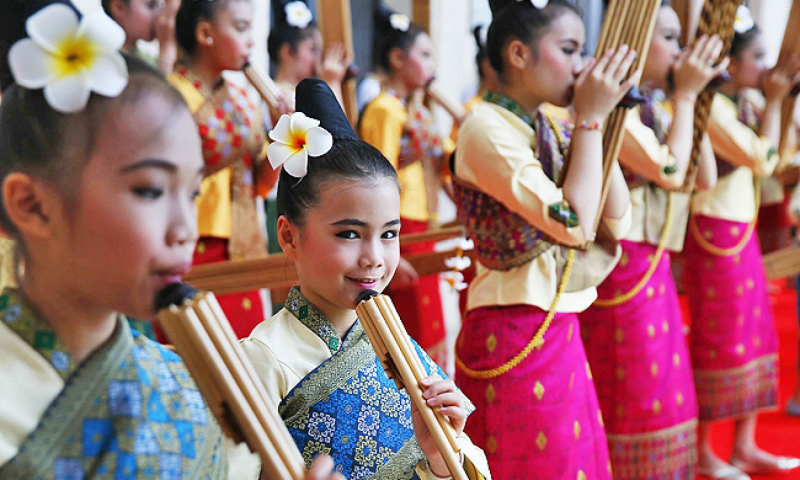
allasiatours.com 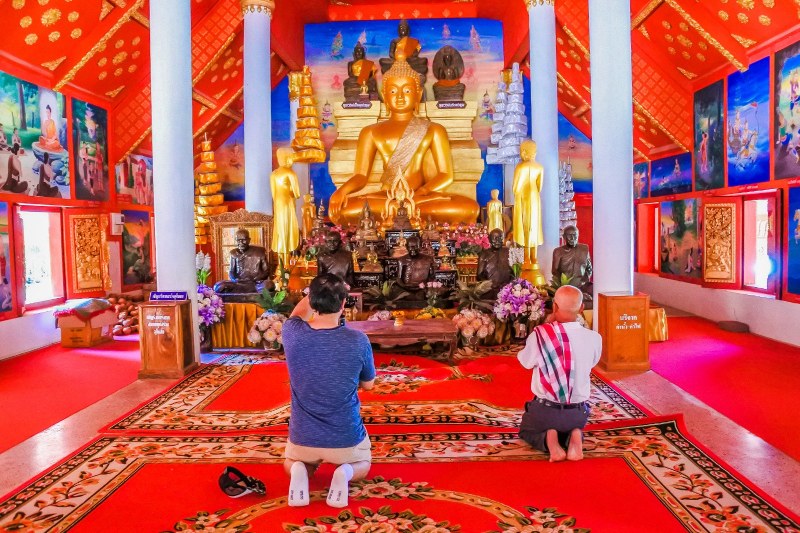
allasiatours.com -
Before entering a temple, visitors are expected to remove their shoes and leave their umbrellas outside. Additionally, they should be well-groomed. Hats must be taken off. Short pants, short skirts, sleeveless tops, and pants for women are often considered to be unsuitable apparel, yet foreigners frequently unwillingly tolerate them. When entering the temple grounds, several cultures demand that guests remove their shoes (and occasionally their socks as well). Others simply call for their removal before entering a pagoda, shrine, or temple structure. Some people wash their feet before going inside a temple. In Laos, it is acceptable to walk around a temple compound in shoes, but remember to take them off before entering the chapel. In order to visit some temples, ladies wearing short skirts or pants must first put on a Lao skirt as an additional garment. Lao skirts are typically given or can be rented on the spot (if this is required).
Always circumambulate Buddhist structures in a clockwise direction, keeping the holy sites to your right (this is more important in Tibet and Himalaya areas than it is in Southeast Asia) Don't pass those who are kneeling in prayer. Don't take pictures while you're meditating or praying. Use a flash sparingly. Always double-check that it is okay before taking photos. Buddha statues are revered objects, hence it's forbidden to approach them or place your foot in their direction. Many locals use the "mermaid stance" when sitting down to keep both feet pointed backward. Although taking pictures of Buddha icons is disrespectful, foreign tourists are nevertheless allowed to do so. Laos is home to numerous holy sites and objects.
Standing or sitting in front of an image of the Buddha, one prays by bending over or kneeling with their hands clasped to their foreheads. After depositing a coin or bill into the offering box and leaving a flower, fruit, or other offering, people frequently say prayers. Numerous people stop by various altars, lighting some incense and praying at each one. Others make a bow and sprinkle water—a sign of life—on the altar. Other people bow down and bow three times in front of shrines. Large temples often have contribution boxes beside the door where people can leave cash. if a donation box is not present. The cash can be left on the ground.Three Southeast Asian bows are the proper way to meet monks. If possible, attempt to bow your head when speaking to a monk. You can accomplish this by squatting down or making a small bow. If a monk is sitting down, you ought to be doing the same. Women shouldn't approach a monk directly, touch him, or give him anything (instead place the object on a table or some other surface near the monk). People typically offer monks their seat on buses and trains.
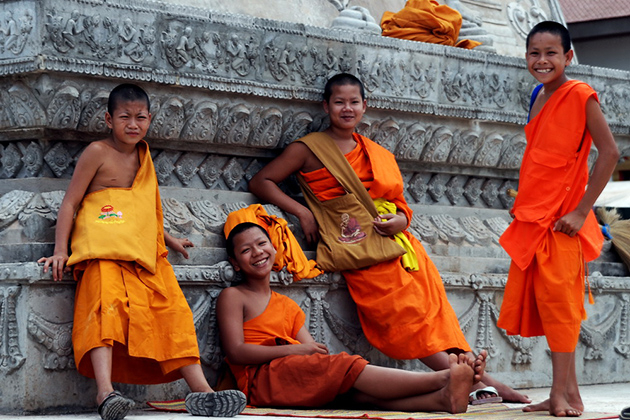
planetjanettravels.com 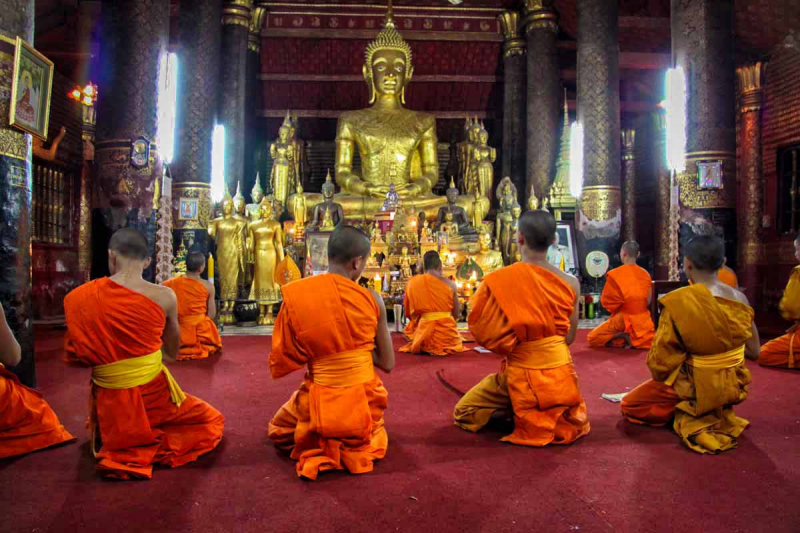
planetjanettravels.com -
Others contend that buying items from youngsters and giving money to beggars just encourages them, which is one of the lists of Laos culture, customs, and etiquette. If you give anything to one individual, a crowd will frequently swarm you and demand they're fair portion. Beggars frequent tourist-heavy locations like Times Square. Giving them money encourages them to harass tourists for cash rather than look for more ethical methods to make a living.
Giving children money encourages parents to stop sending them to school and instead send them out into the world to work for money. Criminal gangs will sometimes force youngsters who are begging to work, especially if there is high pay involved. Some individuals suggest providing the kids a food or donating money to their parents if you really want to help the kids.
- Many hill tribes fear photography. Don’t photograph anyone or anything without permission first.
- Show respect towards religious objects and structures. Don’t touch anything or enter or walk through any religious structure unless you are sure it is okay. If in doubt ask.
- Don’t interfere in rituals in any way.
- Don’t enter a village house without permission or an invitation. Sometimes you need to exercise caution entering a village by, for example, not walking through a gate reserved for forest spirits.
- Error on the side of restraint when giving gifts. Gifts of medicine may undermine confidence in traditional medicines. Gift of clothes may encourage them to abandon their traditional clothes.
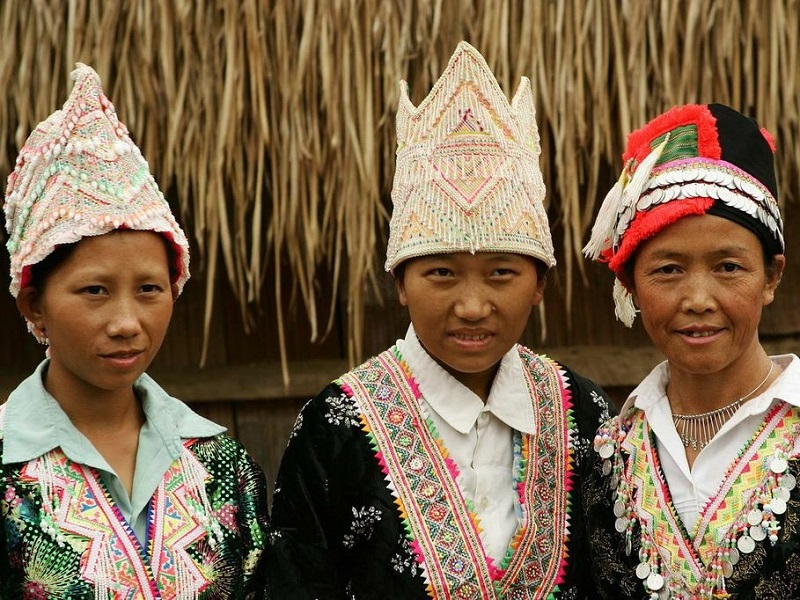
roughguides.com 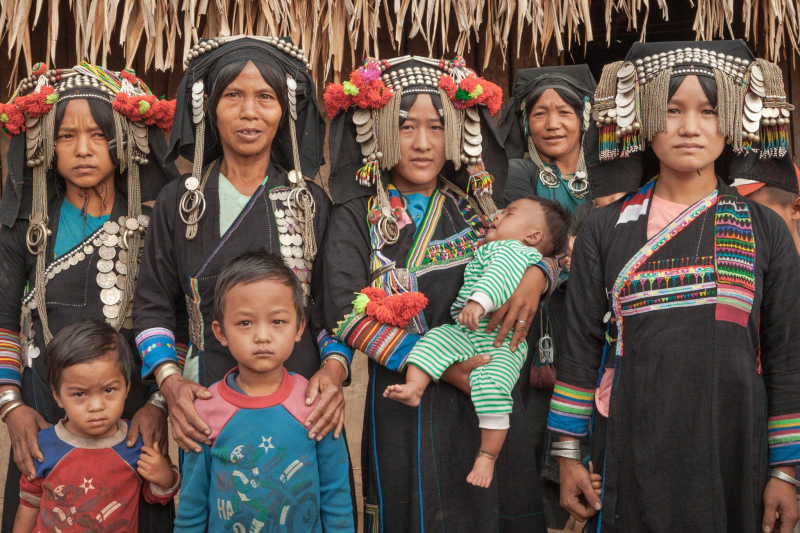
roughguides.com -
Southeast Asians frequently inquire about marriage and age practically right away after meeting a stranger. Even now and again, people will inquire about your income. The intent here isn't necessarily to be nosy. Instead, it's crucial to be aware of this information about a person in order to know how to bow and address them properly. The "height" rule also applies horizontally, with those of higher rank and status sitting at the front of a room while those of lower rank and status are seated at the back, and vice versa when people are walking one in front of the other. Although it isn't always followed, the saying "Walk behind an old man, the dog doesn't bite you" advises kids to walk politely behind people who are older than they are.
Maintaining a low profile in a Lao gathering will increase your chances of achieving social success there. Lao people normally interact with one another as families, and the majority of them live in extended families that include three generations or more and share a same home or compound. Together, the family prepares sticky rice and eats it while seated on the floor. Sometimes, when someone unexpectedly drops by during mealtime, we welcome them to join us without thinking twice.
Due to the Lao people's basic way of life, it is completely normal for family members or friends to drop by without calling in advance. Therefore, if you reside or work in Laos, do not be surprised if your Lao friends unexpectedly knock on your door. If they act in that way, it's not because they lack tact; rather, it appears to be completely normal behavior to them, and it's possible that they don't know or comprehend your cultural customs. In Lao culture, time is likewise a fairly malleable resource. Foreigners who struggle with the concept of things happening at "maybe two o'clock" may find it frustrating to plan ahead and set firm times for occasions. Additionally, invites to events like parties and weddings are sometimes sent out the day before the occasion, and the host is occasionally taken aback that other people need more advance notice for their social lives.
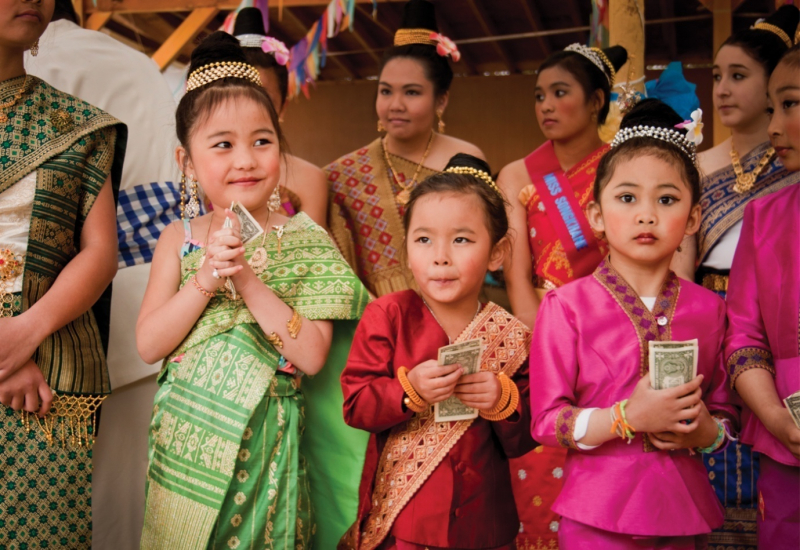
golaos.tours 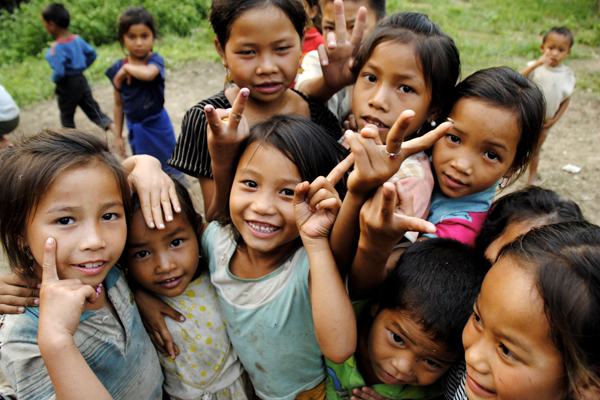
golaos.tours -
According to Culture Crossing, you should waggle your hands loosely while holding them palm down and fingers pointing toward the ground to beckon someone. Western-style palm-upbeckoning could be viewed as impolite. Pointing is frowned upon, so avoid doing it. Ordinarily, it is considerate and expected that visitors take their shoes off before entering a person's home. It is necessary when entering a Buddhist temple. The majority of Laotians sit such that their feet are hidden from view, since exposing the bottoms of one's bare feet is regarded as impolite. That is one of the lists of Laos culture, customs, and etiquette.
It is impolite to aim directly at someone, touch someone's head or hair (other than a tiny child), point your feet directly at someone (particularly a monk or a statue of the Buddha), hurl things, and act generally aggressively or violently. Men should wear long pants and a shirt when entering a temple. Avoid wearing shirts, miniskirts, halter tops, and strapless tops on women (anything exposing their shoulders). The majority of Laotians sit such that their feet are hidden from view since exposing the bottoms of one's bare feet is regarded as impolite.
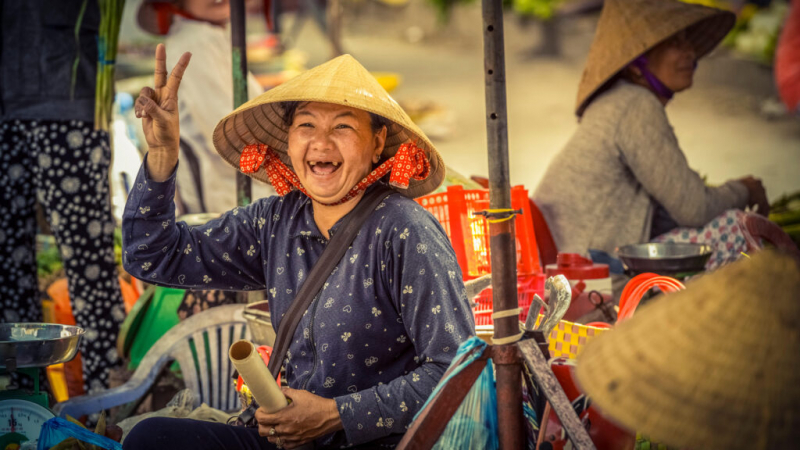
laostourism.org 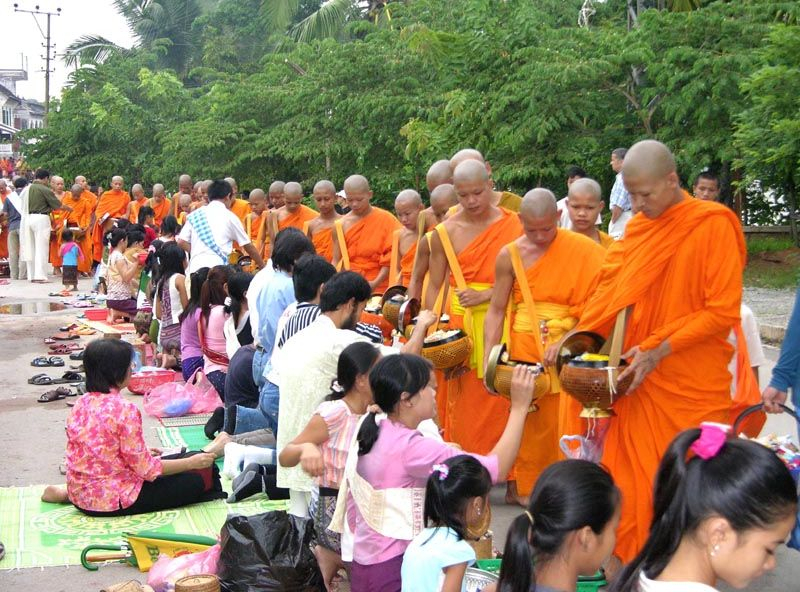
laostourism.org -
The spoon is used by the Lao while the fork is held in the right hand. Food is transferred to the spoon using the fork. However, sticky rice is consumed with the right hand's clean, napkin-wiped fingers. Traditionally, rice was rolled into balls, dipped into the dishes, and used to mop up spills like bread. In general, Laotians don't use chopsticks when eating. The only foods typically eaten with chopsticks are noodles and noodle soups. Food was primarily handled by hand. Since sticky rice can only be handled by hand, this custom presumably developed as a result. Laotians always wash their hands before eating because they frequently eat with them. When sticky rice sticks to your hand, it is said that you have sufficiently cleaned your hands.
In a typical home, meals are brought to diners as they sit on mats on the floor. The host and his family will keep their heads at the same level as the guest's as a gesture of respect. Therefore, in order to avoid offending anyone, they are allowed to carry the meal while squatting.
Laotians like sharing meals with others and trying a variety of cuisines. When a group dines together, a variety of foods are ordered, and each person tastes the various selections. Typically, a covered basket is used to serve sticky rice. When one has completed eating, one is expected to close the rice basket. It is considered unlucky to not put the cover back on the basket after a meal. Visitors may be offered tea or fruit; this should not be declined. At the very least, one ought to sample it. When visiting, it is not traditional to provide a gift.
The traditional way of eating is in a circle around a raised rattan platform known as a ka toke, with diners seated on reed mats on the wooden floor. On the ka toke, which is a standard size, dishes are arranged. Where there will be a large number of diners, many ka tokes will be made. Sticky rice is served in one or more baskets each ka toke and is shared by everyone eating there. Eating at a ka toke is now more of an exception than the norm. However, the tradition is still practiced at temples, where each monk receives his meal on a ka toke.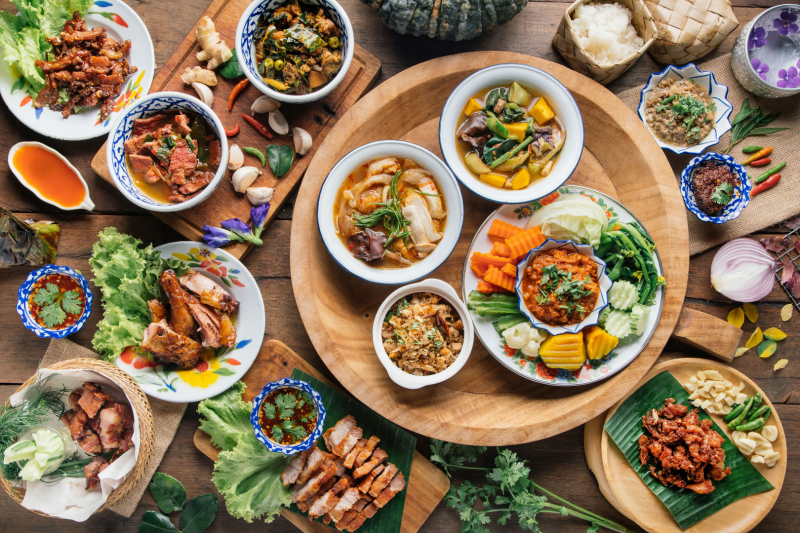
tripsavvy.com 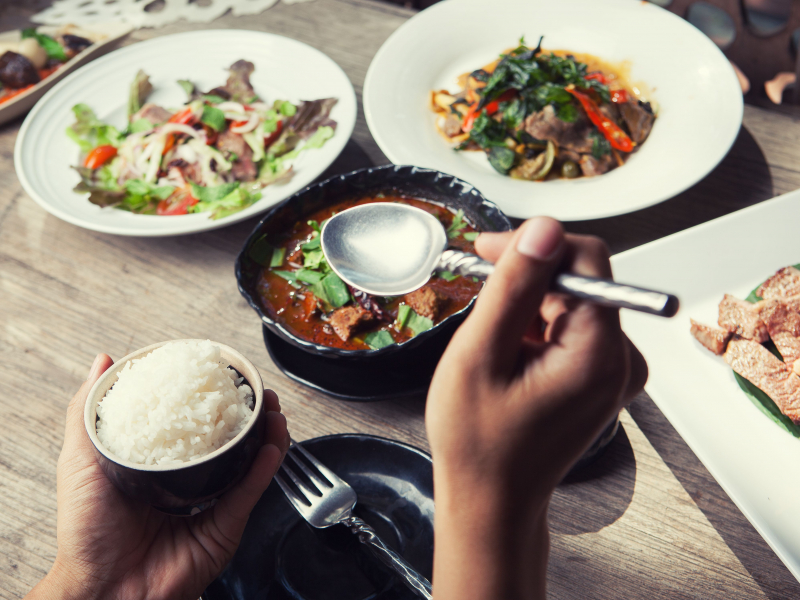
tripsavvy.com -
Laotians frequently consume "lao lao" and eat food while partying on the home's floor. The host, or an older man who serves as the bartender, oversees the gathering and starts the drinking by drawing out a bottle, pouring the first shot on the ground to honor the house spirit, and then taking a shot himself.
After that, the host serves lao lao in a shot glass to the person to his left. The drinker raises his glass, looks around at the other guests, and swallows the shot whole. The glass is returned to the bartender, who makes a shot for the following individual and repeats the process. There must be at least nine drinks per guest. Refusing is quite rude. Refusing the first drink is nearly unheard of, but subsequent drinks may be declined.
A website that provided information on conducting business in Laos stated: "In the Lao drinking ritual, one person, usually the host, travels around the room serving a shot glass of whiskey to each guest. The server must drink first and everyone in attendance must see it. You might assume this crucial role as the guest of honor as well. It will please the host. But take care. Each guest will ask you to drink from the glass first as you go around the table. You are free to decline and divert their focus with humor.
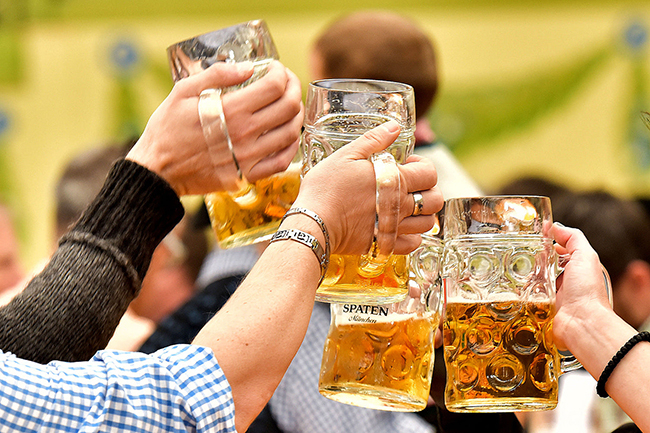
nytimes.com 
nytimes.com












